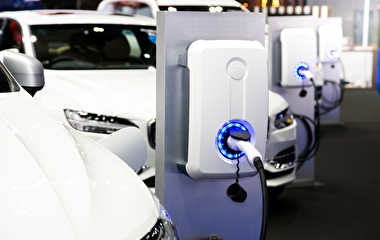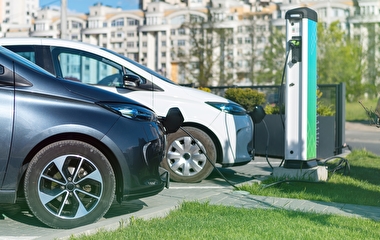Information and communication technologies (ICT) are changing how and where we work, shop, and live our lives by making virtual activities a viable alternative to traditional physical activities. The rapid growth of these technologies has important implications for the transportation system.
“Unsurprisingly, transportation policymakers and planners are hoping ICT will replace some activities that require travel between places and help alleviate the transportation challenges that many large metropolitan areas face,” says Jason Cao, an associate professor in the Humphrey School of Public Affairs. “However, the impact of ICT on activity participation and travel is more complex than it appears at first glance."
In a project sponsored by the Minnesota Department of Transportation (MnDOT) and the Minnesota Local Road Research Board, U of M experts synthesized the effects telecommuting and teleshopping have on travel behavior and predicted their potential impacts on our transportation system in the decades to come.
Both e-shopping and telecommuting are growing, and this growth is expected to continue. In 2010, about 16 million employees worked at home at least once a month—an increase of 62 percent from 2005. Currently, e-shopping makes up more than 6 percent of total retail sales, and experts estimate it may eventually account for up to 50 percent. Other ICT such as telemedicine and telebanking are also likely to see growth.
Cao found that previous studies on the travel impacts of ICT show mixed results. Telecommuting offers the potential to reduce travel during peak hours, lower VMT slightly, and help mitigate freeway congestion in the short term, but it can increase non-work travel and influence the travel of other household members. It may also enable commuters to move farther away from their work and become auto-dependent.
For e-shopping, the literature shows that people who buy online also buy in person more often, so e-shopping may—or may not—reduce travel to stores in the short term. Online buying increases delivery traffic and freight transportation, Cao says, and if the share of e-shopping grows enough to change the distribution of commercial land uses in a region, it would have a profound effect on shopping-related travel.
“We believe that transportation planners should be realistic about the relationship between ICT and travel,” he says. “Although the short-term effect of ICT on travel may be substitution, leading to slight reductions in VMT, in the long term travel demand is likely to grow as ICT induces new travel.”
“This work clearly shows the complex relationship of information and communications technology with travel behavior and impacts on the system,” says Ken Buckeye, program manager with MnDOT’s Office of Financial Management. “As transportation planners and managers, we must be mindful that the short-term effects of these policies and trends may mask more significant long-term effects like the potential for increasing travel.”
Cao’s research is part of a multi-pronged study that analyzed the technological shifts altering surface transportation and the implications for Minnesota. Other contributors included Professor David Levinson (principal investigator) and assistant professor Adam Boies of the Department of Civil, Environmental and Geo- Engineering, and Humphrey School associate professor Yingling Fan. Their high-level white papers are compiled in a final report: The Transportation Futures Project: Planning for Technology Change.



